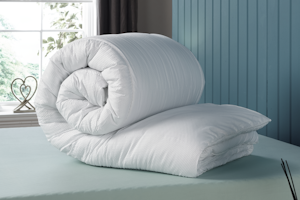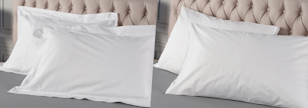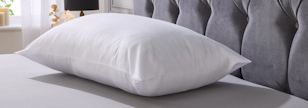04 Jun 2025
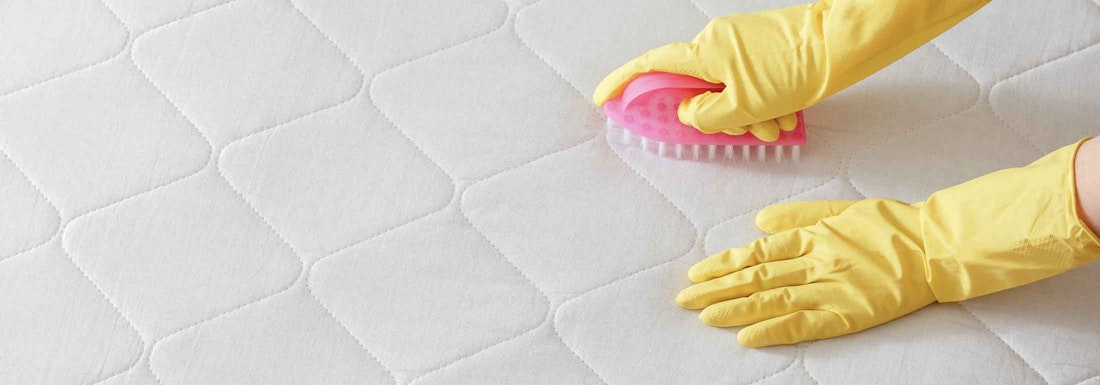
How To Clean A Mattress: Effective Tips and Techniques
18 Aug 2023
Cleaning a mattress is an essential task that is often overlooked by many. A clean and well-maintained mattress not only ensures a good night's sleep but also contributes to a healthier sleeping environment. With the accumulation of dust mites, allergens, and odours, it's crucial to know how to correctly and effectively clean your mattress to prolong its life and maintain hygiene.
Understanding the basics of mattress cleaning can make a significant difference in the cleanliness and freshness of your sleeping surface. Moreover, a clean mattress diminishes the chances of allergies and respiratory issues arising from accumulated dirt and allergens. In this article, we will provide a step-by-step guide to mattress cleaning, methods to remove stubborn stains, and tips for maintaining a clean and comfortable sleeping environment.
Key Takeaways
- Regular cleaning of a mattress promotes a healthier sleeping space
- Familiarise yourself with the materials and techniques best suited for cleaning a mattress
- Regular maintenance and proper stain removal techniques can prolong the life of your mattress
Understanding Mattress Cleaning Basics
A clean mattress is essential for maintaining a hygienic and comfortable sleep environment. Regular cleaning helps maintain the mattress's lifespan, removes allergens such as dust mites, and tackles common stains like sweat and spills. Keep a consistent routine and follow the correct techniques to ensure a fresh and clean mattress.
One of the fundamental steps in mattress cleaning is vacuuming. It is advised to vacuum the mattress surface using the upholstery attachment on a vacuum cleaner. This will effectively remove dust, debris, and allergens accumulated within the mattress fibres. It is essential to ensure the attachment is clean before use to avoid transferring dirt back to the mattress.
For stain removal, it is crucial to address stains promptly to increase the likelihood of successful treatment. Use a damp sponge with cold water to gently blot and clean the stained area without saturating the mattress. Following this, use a suitable stain remover to spot-treat the affected area. Specific cleaning solutions may be required according to the type of stain, such as enzyme cleaners for biological stains like urine or blood.
Baking soda is an effective and natural cleaning agent that can be used to freshen up your mattress. Sprinkle a generous layer of baking soda on the mattress surface and let it sit for a few hours or, ideally, overnight. This will assist in absorbing odours, moisture, and neutralising any lingering stains on the mattress. Vacuum the baking soda carefully after allowing sufficient time for it to work its magic.
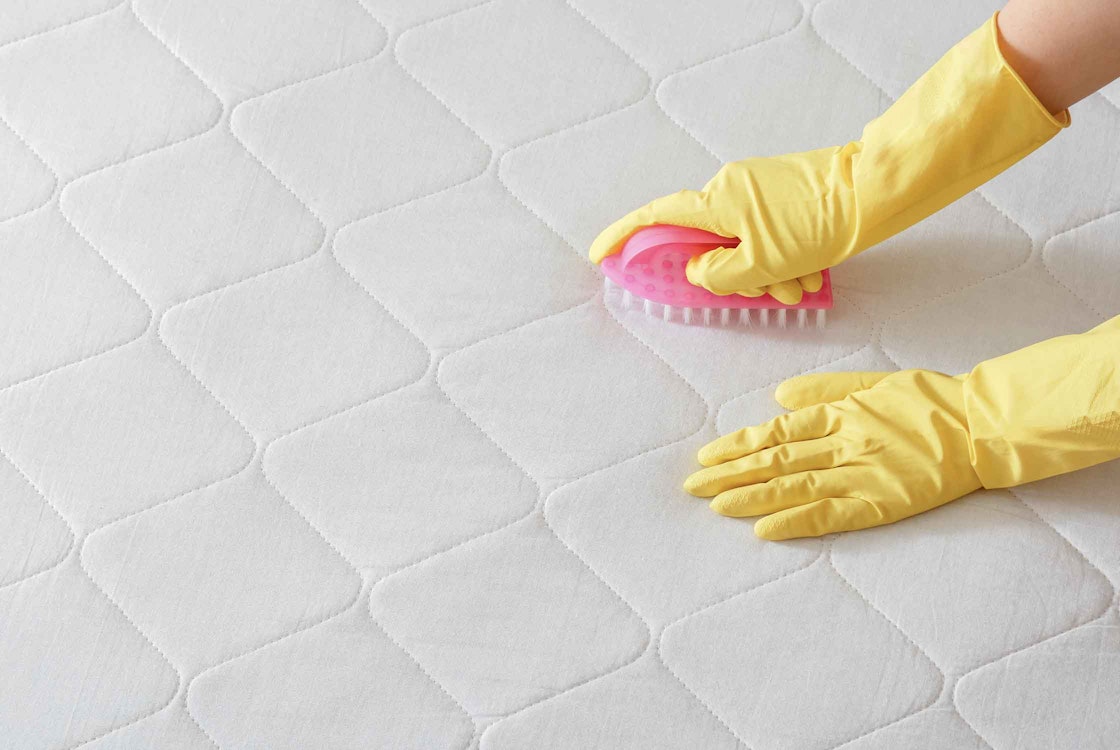
In some cases, a bit of research may be necessary to tailor your cleaning methods according to the mattress type. Some materials like memory foam mattresses often require special care or cleaning instructions provided by the manufacturer.
Remember to not use excessive water when cleaning a mattress, as it may damage and promote the growth of mould and mildew. It is equally important to allow the mattress to dry thoroughly before placing sheets and bedding back onto it.
By following these basic mattress cleaning techniques, you can ensure a clean and fresh sleeping environment and prolong the lifespan of your mattress.
Importance of Regular Mattress Cleaning
Regular mattress cleaning is essential in maintaining a fresh and hygienic sleeping environment. Over time, mattresses can accumulate dust, bacteria, and allergens, which can lead to a decline in the quality of sleep and potentially aggravate allergies or respiratory issues.
One key reason to clean a mattress regularly is to reduce the presence of dust mites. These microscopic creatures thrive in the warm and humid environment provided by a mattress, and their waste products can provoke allergic reactions in some individuals. Regular cleaning helps to control their population and keep allergies at bay.
Another reason for regular mattress cleaning is the removal of sweat, body oils, and dead skin cells that are naturally shed during sleep. These substances can cause unpleasant odours and provide a breeding ground for bacteria. Ensuring a clean mattress prevents the build-up of these unwanted substances and helps maintain a fresh and inviting place to rest.
Furthermore, accidental spills and stains can occur on a mattress, which, if left untreated, may become unsightly and difficult to remove. Regular cleaning enables the prompt treatment of spills, preventing long-term damage, and preserving the appearance and lifespan of the mattress.
In addition to the health benefits, regular mattress cleaning also contributes to the overall comfort and longevity of the mattress. By removing accumulated debris and maintaining proper hygiene, individuals can enjoy a more restful sleep on a clean mattress, ultimately prolonging its lifespan and ensuring the best possible sleeping experience.
Materials Required to Clean a Mattress
In this section, we will discuss the materials needed to clean a mattress effectively. We will focus on cleaning agents, tools and equipment required for the cleaning process.
Cleaning Agents
To clean a mattress effectively, you will need the following cleaning agents:
- Stain remover: Choose a stain remover that's specifically designed for upholstery and fabric materials. This will help remove any stains on your mattress effectively without causing damage.
- Mild detergent: A mild detergent will be needed to clean and deodorise the mattress. Make sure to use a small amount to avoid over-soaking the fabric.
- Distilled white vinegar: Distilled white vinegar acts as a natural deodoriser and can be used to remove stains and neutralise odours.
- Baking soda: Baking soda is a natural cleaning and deodorising agent. Sprinkling it on your mattress can help absorb any moisture and neutralise odours.
Tools and Equipment
For a thorough mattress cleaning, you will require the following tools and equipment:
- Vacuum cleaner with an upholstery tool: A vacuum cleaner with an upholstery tool will allow you to remove dust mites, dirt, and debris from the surface and sides of your mattress.
- Soft brush: A soft brush or an old toothbrush will aid in gently scrubbing stained areas with cleaning agents.
- Clean, absorbent cloths or towels: These are needed to apply cleaning agents, remove excess solution, and blot any damp areas on the mattress.
- Spray bottle: A spray bottle is useful for applying a controlled amount of cleaning agents to the mattress.
With the right cleaning agents, tools, and equipment, you can effectively clean and maintain your mattress, ensuring a fresh, hygienic sleeping environment.
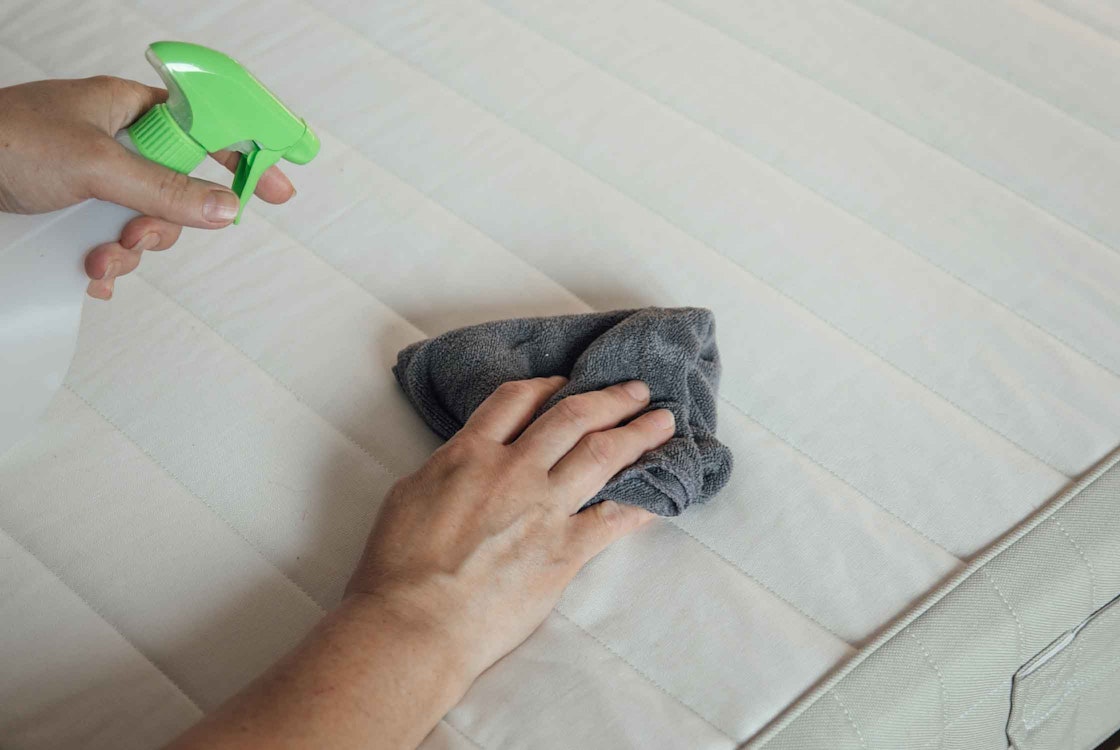
Step by Step Guide to Mattress Cleaning
Removing Bedding
Begin by removing all items from the bed, including pillows, decorative pillows, blankets, toys, and any other objects. Make sure to wash and dry all bedding according to the care instructions to ensure a thorough clean.
Vacuuming the Mattress
After removing the bedding, gently vacuum the surface of the mattress using the upholstery attachment on the vacuum cleaner. Make sure that the attachment is clean before starting. Vacuuming helps to remove dust, dirt, and debris that may have accumulated on the mattress over time.
Applying the Cleaning Solution
Next, create a cleaning solution for your mattress. A simple mixture of warm water and mild dish soap should suffice. Avoid using harsh chemicals, as they may damage the mattress material. Dip a soft cloth or sponge into the solution and wring out any excess liquid.
Spot Cleaning
Using the damp cloth or sponge, gently scrub the mattress, focusing on any visible stains. If necessary, use a stain-removing solution for more stubborn marks. Apply the solution directly onto the stain and gently scrub with a cloth or old toothbrush. Be cautious not to over-saturate the mattress with liquid.
Drying the Mattress
After cleaning, use a damp cloth to wipe away any excess cleaning solution from the mattress. To ensure that the mattress dries thoroughly, it is recommended to leave it in a well-ventilated area with a gentle airflow. Additionally, you may use a fan or open a window to aid in the drying process. Once completely dry, replace the bedding and enjoy the freshness of a clean mattress.
Methods to Remove Mattress Stains
Removing Sweat Stains
To remove sweat stains from your mattress, start by mixing equal parts of water and white vinegar. Then, dampen a cloth with the solution and gently blot the stain. Continue this process until the stain is no longer visible. For more persistent stains, you can apply a paste made of baking soda and water, allowing it to sit for a few hours before vacuuming it off.
Eliminating Urine Stains
Urine stains can be removed by first blotting the area with a dry cloth to absorb as much moisture as possible. Next, mix equal parts of water and white vinegar and spray the solution onto the stain. Blot the area with a clean cloth, and repeat this process until the stain is gone. To combat any lingering odours, sprinkle bicarbonate of soda over the affected area, let it sit for a couple of hours, and then vacuum it up.
Dealing with Blood Stains
To remove blood stains, it is important to act quickly and avoid using hot water, as it may set the stain. Instead, use a solution of cold water and a small amount of gentle laundry detergent. Dampen a clean cloth with the solution and dab at the blood stain until it starts to lift. If the stain persists, apply a small amount of hydrogen peroxide, being mindful that it may bleach the fabric, and dab the area with a clean cloth.
Removing Other Types of Stains
For other types of stains, always consult the mattress manufacturer's care instructions, as they may recommend specific cleaning solutions or techniques. In general, it is useful to have a multi-purpose cleaner consisting of equal parts water and white vinegar. Test the solution on a small, inconspicuous area before applying it to the entire stain. Gently dab the stain with the cleaner, and repeat the process until the stain has disappeared.
Maintaining a Clean Mattress
Regular Vacuuming
Vacuuming your mattress regularly plays a vital role in keeping it clean and fresh. Use the upholstery attachment on your vacuum cleaner to gently vacuum the surface at least once a month. Ensure the attachment is clean before you begin to avoid transferring dirt or debris onto the mattress. This process will help remove dust mites, allergens, and dead skin cells that can accumulate over time.
Use of Mattress Protector
Investing in a high-quality mattress protector can greatly contribute to maintaining a clean mattress. A mattress protector serves as a barrier between the mattress and any potential allergens, liquids, or stains. It is recommended to use a waterproof and hypoallergenic protector to safeguard your mattress from spills and allergens. Additionally, make a habit of washing the mattress protector regularly according to the manufacturer's instructions to maintain its effectiveness.
Regular Linen Change
Changing your bed linens, including pillowcases and sheets, at least once every week or two, is essential in maintaining a clean mattress. This action not only ensures a comfortable and hygienic sleeping environment but also prevents the growth of bacteria, mould, and allergens. Washing your bed linens on a hot cycle (60°C) can help kill off any lingering bacteria and eliminate dust mites.
Warnings and Precautions When Cleaning Mattresses
When cleaning a mattress, it's essential to follow some precautions to ensure both the safety and longevity of the mattress.
Firstly, always check the manufacturer's instructions to avoid using the wrong products or techniques. Some mattresses require specific cleaning methods, which, if not followed, can cause damage to the mattress.
Next, be careful not to over-wet the mattress during cleaning. Excessive moisture can lead to mould and mildew growth, which can be harmful to both the mattress and your health. Use a clean and dry cloth to blot the area and remove excess moisture after applying a cleaning solution.
Avoid using harsh chemicals and cleaners, as these may damage the fabric and materials within the mattress. Instead, opt for gentle, enzyme-based cleaners or mild dish soap. Furthermore, never mix different cleaning solutions, as this may create harmful chemical reactions.
When vacuuming the mattress, ensure the upholstery attachment is clean before use, as this will prevent the transfer of dirt and allergens back onto the mattress. Vacuuming efficiently helps to eliminate dust mites, dead skin cells, and other allergens, ensuring a healthier sleeping environment.
Lastly, make sure the mattress is completely dry before putting sheets and bedding back on, as trapped moisture can cause mould and mildew. If possible, air the mattress outside or in a well-ventilated room to speed up the drying process.
By following these warnings and precautions, one can effectively clean the mattress while preserving its quality and ensuring a hygienic, comfortable sleeping space.
